Social network based inference
Fraud Detection in R

Tim Verdonck
Professor Data Science at KU Leuven
Social network based inference
Goal
Predict the behavior of a node based on the behavior of other nodes
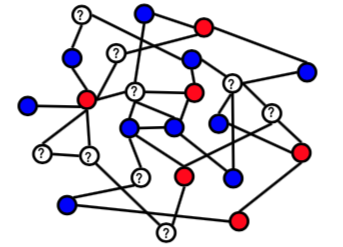
Social network based inference
Challenges
- Data are not independent
- Behavior of one node might influence behavior of other nodes
- Correlated behavior between nodes
- Collective inference: inferences about nodes can affect each other

Non-relational vs relational
Non-relational model
- Only uses local information
- Logistic regression, decision trees, ...
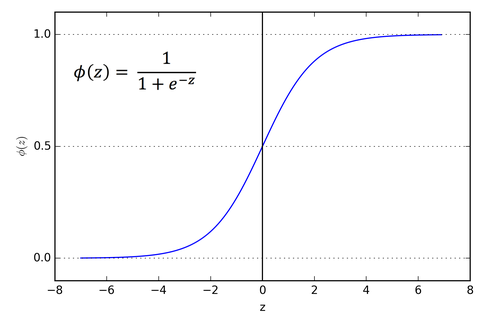
Relational model
- Makes use of links in the network
- Relational neighbor classifier
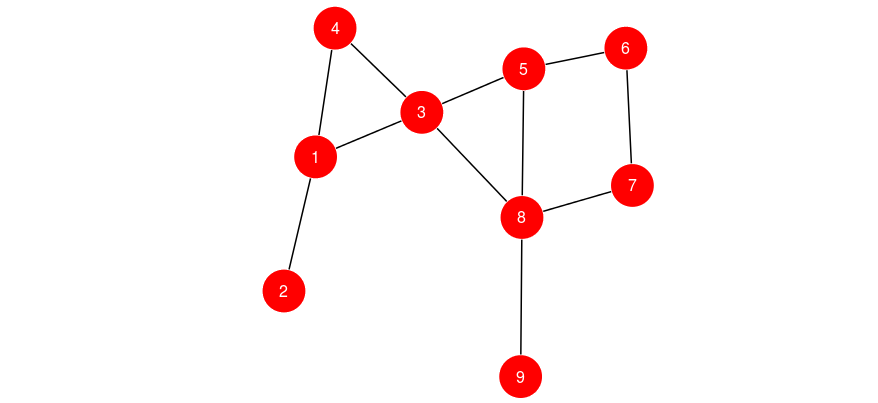
Relational neighbor classifier
Assumptions
- Homophily: connected nodes have a propensity to belong to the same class ("guilt by association")
- Some class labels are known
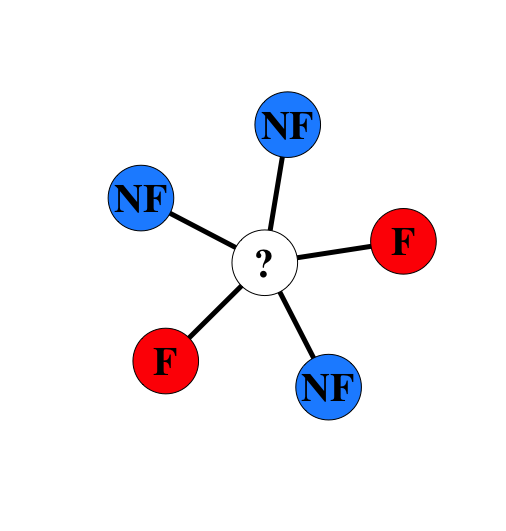
Relational neighbor classifier
Probability of fraud
$$P(F | ?) = \frac{1 + 1}{1 + 1 + 1 + 1 + 1}=\frac{2}{5}= 40\%$$

Relational neighbor classifier with weights
Probability of fraud
$$P(F | ?) = \frac{1 + 2}{3 + 1 + 1 + 2 + 1}=\frac{3}{8}=37.5\%$$
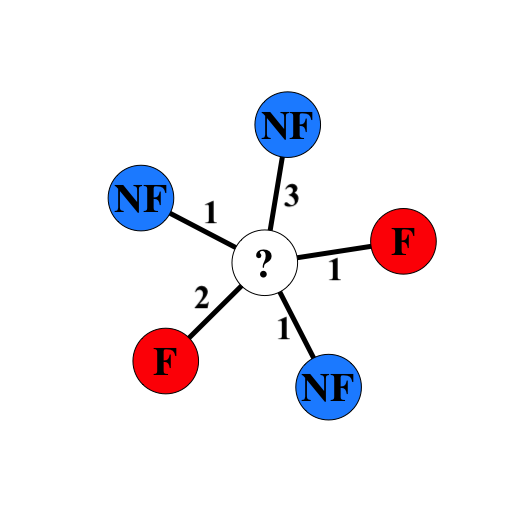
Relational neighbor classifier
vertex_attr(network) ## Nodes are labeled as 1 (fraud), 0 (not fraud), or NA (unknown)
$name
"?" "B" "C" "D" "E" "A"
$isFraud
NA 1 0 1 0 0
edge_attr(network) ## The edges have a weight$weight
2 3 1 1 1
Relational neighbor classifier
## subgraph(): create subgraph containing nodes "?" and all fraudulent nodes subnetwork <- subgraph(network, v = c("?", "B", "D"))## strength(): sum up the edge weights of the adjacent edges for node "?" prob_fraud <- strength(subnetwork, v = "?") / strength(network, v = "?")prob_fraud
0.375
Let's practice!
Fraud Detection in R

